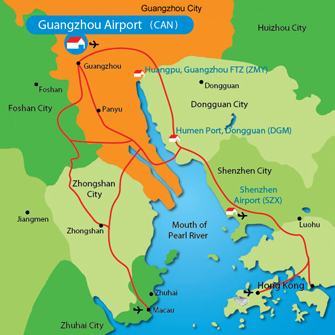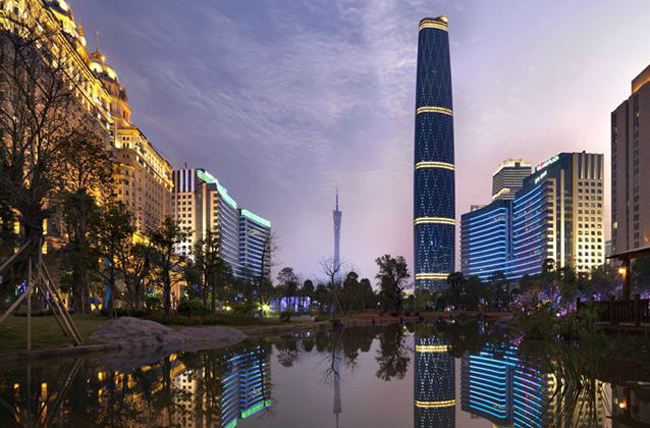Betting on globalization
I recently spoke at an airport city conference in Guangzhou. I was there as part of a consulting assignment for the Guangzhou Aerotropolis Development District, reviewing the extensive urban development around the airport.
Guangzhou is centred within the Pearl River Delta (PRD), the broad region of Southern China that also includes Hong Kong, Shenzhen, and Macao. With over 80 million people, this is one of the most populace and economically productive places on the planet. Among other things, virtually every high-tech good that we use has components produced or assembled in this area.

Guangzhou and the rest of the PRD is turning itself inside out to connect with the rest of the world. Guangzhou, as well as 17 other Chinese cities, now allow 72-hour visa-free transit. This policy allows air passengers from 53 countries to arrive and stay within the city boundaries for up to three days without a visa – it’s as easy as rocking up to Dubai.

The Guangzhou Airport is already China’s number three airport by passenger movement and is planning to grow to five runways, 100 million passengers, and 160 international destinations in the next 15 years. The aerotropolis area extends over 110 square kilometres, focused on cargo and logistics, including bonded area and supporting industries. It is starting to specialise in some interesting ways. For example, it is incorporating a three-square-kilometre ‘China/Australia/New Zealand/Korea’ free-trade zone, integrating mixed-use commercial and exhibition areas.

There are still important challenges to this kind of development. Mixed-use urban density and extraordinary surface connectivity are key to making airport city development work, and the Guangzhou aerotropolis can improve quite a bit in these directions. But there is no debate about intentions; China is betting on globalization. And aviation-related development and diversification is a critical element of current planning.
We can learn a lot from this kind of ambition.






